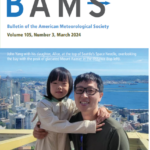Task 114 and 142
Using a Cloud-resolving Model to Simulate Lightning NOx Production During the TC4 Experiment
Principal Investigator(s):
K. Cummins
Sponsor(s):
K. Pickering
Last Updated:
October 26, 2012 15:25:25
Description of Problem
Forecasting lightning flash rates based on model storm parameters is a useful way to simulate the electrical activity in a thunderstorm, as well as estimate the production of lightning-generated nitrogen oxides (LNOx). Six types of flash rate parameterization schemes (FRPS) were evaluated using the cloud-resolved WRF Aqueous Chemistry (WRF-AqChem) simulation of the 16 November 2005 Hector thunderstorm, which occurred over the Tiwi Islands during the Stratospheric-Climate Links with Emphasis on the Upper Troposphere and Lower Stratosphere (SCOUT-O3) and Aerosol and Chemical Transport in Tropical Convection (ACTIVE) field campaign near Darwin, Australia, in 2005. We will test six FRPS, based on work by Barthe et al. (2010), in the Hector storm simulation to determine if there is a scheme(s) that best estimates the total flashes and resulting NOx production over the lifetime of the convective event. The FRPS will also be tested in two case studies, which investigate the influence of the El Niño Southern Oscillation (ENSO) on the lightning flash rate and resulting NOx production in Hector thunderstorms from an El Niño year (2002) and La Niña (1999) year during the month of November.
Scientific Objectives and Approach
Our specific tasks:
Test six FRPS based on the following model storm parameters: maximum vertical velocity, updraft volume, cloud top height, precipitation ice mass, ice mass flux product, and ice water path
Compare the estimated total (intra-cloud and cloud-to-ground) flashes over the lifetime of the simulated 16 November 2005 Hector storm with the total flashes observed by the lightning detection network (LINET)
Calculate scaling factors for each FRPS and select a scheme(s) to include in the WRF model that best represents the trend in total flashes
Compare the resulting LNOx produced by the FRPS(s) against that produced by the simulated Hector storm when observed total flashes were used as model input
Incorporate the FRPS(s) that best represent the 2005 Hector storm in the two ENSO case studies
Accomplishments
The two FRPSs that best represent the trend in total flashes observed by the LINET for the 16 November 2005 Hector thunderstorm are maximum vertical velocity and cloud top height (Figure 1). Both FRPS show a trend similar to the observed flash rates, with a large peak in flashes shortly after convection initiation, which is followed by a decreasing trend in flashes and a secondary peak in the second half of the storm’s life cycle. The magnitude of flashes per minute was also similar at both the primary and secondary peaks and the number of total flashes over the lifetime of the simulated Hector storm is similar to that of the observed flashes. These two schemes are currently being incorporated into the WRF-AqChem model for simulation of LNOx in the 2005 Hector thunderstorm. The resulting NOx production based on observed and parameterized lightning flash rates will be compared, and further adjustments will be made to the FRPS equations if need be, before the FRPS are employed in the simulated Hector storms during the ENSO cases.
Other Publications and Conferences
Cummings, K. A., K. E. Pickering, M. C. Barth, and M. Weisman, 2012. Application of flash rate parameterization schemes and resulting NOx production in cloud-resolved WRF forecasts. 14th Conference on Atmospheric Chemistry, January, New Orleans, LA.






